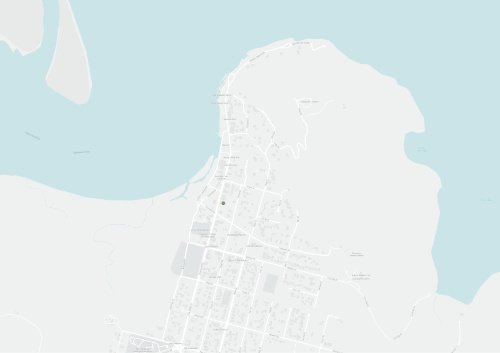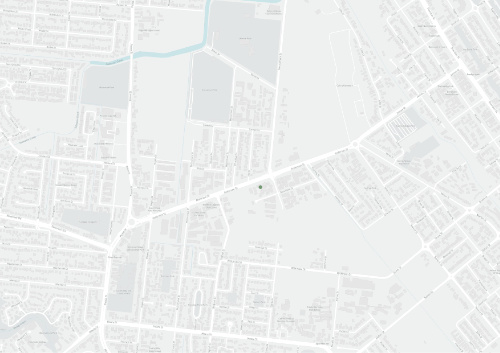Plan Explorer
Filter by:
Region
Topic
Sector
Other
Results
Mitchell River Watershed Management Group operation plan
Superceded OperationalThe Mitchell River Watershed Management Group released this operational plan as a follow up from the business plan to take tasks identified therein and prioritise them, identify potential partners for projects, and setting measurable outcomes and appropriate times for completion of projects.
Normanby Catchments water quality management plan - draft
StrategicThis is the final draft for the Normanby Catchment Water Quality Management Plan and was released for consultation and review on the 1st of September 2013.
Mapoon Aboriginal shire council community plan 2010-2020
Current CommunityThis community plan outlines how the community and council believe that the Mapoon area should develop between the 2010 and 2020 period and sets out how the issues affecting the Mapoon region at the time should've been addressed and a vision for the future Mapoon.
Draft Cape York Peninsula Natural Resource Management Plan (2005)
Obsolete Government PolicyThe aim of the Plan is to ensure that natural resources are well managed, and protected where required, for the benefit of us all and future generations. The Plan aims as far as possible to be consistent with other regional strategies.
Annan and Endeavour Strategic Plan
Current StrategicThe Annan-Endeavour Catchment Management Group has developed this Strategy in close association with all interested community, government and industry groups.
Cape York Peninsula Heritage Act 2007
Current Statutory (law)An Act to provide for the identification of the significant natural and cultural values of Cape York Peninsula, and cooperative and ecologically sustainable management of Cape York Peninsula.
Coastal Management Plan
Current Government PolicyThe Coastal Management Plan is prepared under the Coastal Protection and Management Act 1995 (Coastal Act) to describe how the coastal zone of Queensland is to be managed.
Cape York Regional Plan
Current Government PolicyPublished by the Department of State Development, Infrastructure and Planning. The plan identifies and interprets the state’s interests in land use planning and development, as described in the State Planning Policy, for the Cape York region.
Kaanju Homelands Wenlock & Pascoe Rivers Cape York Peninsula Indigenous Protected Area Management Plan
Obsolete OperationalPrimarily, this Plan is for Kaanju people living on homelands, but it also serves as a guide for external land and resource management, conservation, service delivery, economic development and community development organisations and agencies, both government and non-government, engaged with Chuul
Laura Ranger Country Plan and Poster
Current OperationalPoster outlining a set of guiding priniciples on which Laura Rangers will operate on their country.
Laura-Normanby Catchment Management Strategy
Current StrategicThe Laura-Normanby Catchment Area covers a vast and relatively undeveloped area with extensive riverine and wetland systems, one of Queensland's largest conservation areas (Lakefield National Park), numerous sacred aboriginal sites, good cattle country and rich agricultural lands.
Mitchell River Watershed Strategic Plan
Current StrategicThe Mitchell River Watershed Strategic Plan 2013-2016 is an update of the Mitchell River Watershed Management Plan created in 2000.
Reef Water Quality Protection Plan 2013
Current Government PolicyReef Plan is a joint commitment of the Australian and Queensland governments. The plan is a collaborative program of coordinated projects and partnerships designed to improve the quality of water in the Great Barrier Reef.
Upper Mitchell Catchment Rehabilitation Plan
Current StrategicTechnical Report on Rehabilitation Needs
Vegetation Management Act 1999
Current Statutory (law)The purpose of this Act is to regulate the clearing of vegetation in a way that:
Eastern Kuku Yalanji Indigenous Protected Area Management Plan Stage 2
Current CommunityJalunji-Warra Land and Sea Country
(excerpt)
Eastern Kuku Yalanji Indigenous Protected Area Management Plan Stage 1
Current OperationalCaring for Kuku Nyungkal Country
Our vision for our bubu (land)1 is to
-
Maintain our Nyungkal culture, belief, customs and law/lore;
Hopevale Economic Strategy 2014-2017
Current StrategicHope Vale Aboriginal Shire Council (HVASC) is focussing on a Community Economic Development (CED) model; where communities initiate their own solutions to local problems.
Hopevale Aboriginal Shire council planning scheme
Current StrategicHope Vale is a community for families that celebrates Aboriginal culture, striving to be sustainable, viable, fair and equitable, accommodating change, fostering growth, promoting success in a friendly and culturally sensitive environment and is an enjoyable place to live.
Cape York Peninsula Regional Biosecurity Strategy
Current StrategicCape York Natural Resource Management (Cape York NRM), Cook Shire Council (CSC), Weipa Town Authority, Wujal Wujal, Hopevale, Lockhart, Mapoon, Napranum, Aurukun, Pormpuraaw and Kowanyama Aboriginal Shire Councils and the Northern Peninsula Area Regional Council (NPARC) have collaboratively devel
Hopevale community plan 2012
Current CommunityThe intent of the community plan is that it will represent the community’s views, visions and values for the future of the local government area, and set a strategic vision for what the community wants the area to be like in 10, 20 or more years.
Recently added
Kaanju Homelands Wenlock & Pascoe Rivers Cape York Peninsula Indigenous Protected Area Management Plan
Obsolete OperationalPrimarily, this Plan is for Kaanju people living on homelands, but it also serves as a guide for external land and resource management, conservation, service delivery, economic development and community development organisations and agencies, both government and non-government, engaged with Chuul
Julery Pastoral Property Pest Management Plan
Obsolete OperationalThe plan represents a workable pest management program which identifies, combats and eradicates declared environmental pest plants and feral animals for Julery Pastoral.
Jim's Joint Property Pest Management Plan
Obsolete OperationalThe plan has been prepared to protect the economy and environment of “Jim’s Joint” from the adverse impacts of weeds and feral animals.
Normanby Catchment Water Quality Management Plan
Current StrategicThe Normanby Catchment Water Quality Management Plan is written in accordance
with the Australian Government’s Framework for Marine and Estuarine Water Quality
Cape York Peninsula Pest Management Strategy
Obsolete StrategicThe Cape York Peninsula Pest Management Strategy (CYPPMS) is a broad over-arching document that establishes a Cape-wide planning framework for integrated pest management by government, community, industry and individuals.
Queensland Pest Animal Strategies - Feral Pigs (Sus scrofa)
Obsolete Government PolicyThe overall vision of the feral pig management strategy is to use best practice
management to minimise the impact of feral pigs on the environment, economy and
health of Queensland.
The strategy is intended to achieve five outcomes:
Strategy for Delivering Water Resource Management in Cape York
Current Government PolicyThis strategy identifies short term and long term actions that will enhance opportunities for future access to water resources for agriculture, tourism and other industries in a responsible way.
Cape York Regional Plan
Current Government PolicyPublished by the Department of State Development, Infrastructure and Planning. The plan identifies and interprets the state’s interests in land use planning and development, as described in the State Planning Policy, for the Cape York region.
Cape York Peninsula Feral Pig Management Plan 2006-2009
Obsolete OperationalThe Cape York Peninsula (CYP) Pest Management Strategy provides a planning framework for coordinated pest management between research bodies, agencies, communities, industries, individuals and the government.
Coastal Management Plan
Current Government PolicyThe Coastal Management Plan is prepared under the Coastal Protection and Management Act 1995 (Coastal Act) to describe how the coastal zone of Queensland is to be managed.

